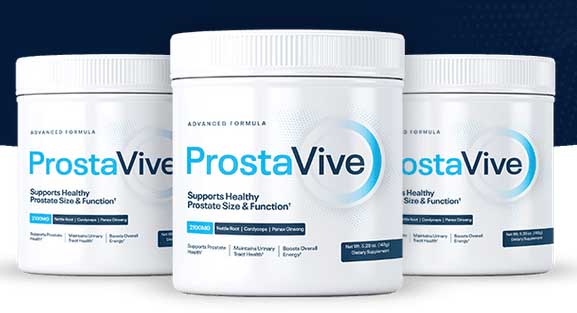Benign Prostatic Hyperplasia (BPH): The Uninvited Guest in Your Bladder’s VIP Lounge
Alright, gentlemen (and curious ladies), let’s talk about something near and dear to our—well, not hearts, but a bit farther south. I know, I know. Talking about prostates isn’t exactly what you had planned for today, but guess what? Neither was constantly running to the bathroom in the middle of your favorite TV show. So, let’s dive into the not-so-magical world of Benign Prostatic Hyperplasia (BPH), a condition that’s about as welcome as a raccoon in your attic but significantly harder to ignore.
What the Heck is BPH? (And Can We Return It?)
BPH stands for Benign Prostatic Hyperplasia, which is just a fancy, intimidating way of saying “Your prostate is throwing itself a growth party, and your bladder is the unwilling neighbour”
See, the prostate is this walnut-shaped gland that sits below your bladder and wraps around the urethra, the all-important tube that ensures urine gets from Point A (your bladder) to Point B (the toilet). Normally, it minds its own business, making fluid for your baby-making juice (yes, I mean semen). But as you age—particularly after 40—it starts getting some grand ideas about expansion, kind of like a billionaire buying up real estate. The problem? There’s no room for expansion. The bladder and urethra are already at full capacity, so when the prostate starts bulking up like it’s training for a bodybuilding competition, it puts the squeeze on your urine flow.
Symptoms: The Subtle (and Not-So-Subtle) Hints Your Body Drops
If you’re dealing with BPH, you’re already well aware that your bladder has become an absolute drama queen. But let’s make sure you know exactly what’s going on before you start blaming your hydration habits or the fact that you can’t hold your coffee like you used to.
1. The Frequent Flyer
You’re making more bathroom trips than a nervous groom before his wedding. If your pee schedule now rivals a toddler’s snack schedule, BPH could be to blame.
2. The Hesitator
You stand there, ready to go, but… nothing. Your bladder is playing a game of “just kidding,” making you feel like you’re trying to start an old lawnmower.
3. The Weak Stream Blues
Remember when you had water pressure like a firehose? Now it’s more like a leaky faucet. Frustrating and unimpressive.
4. The Midnight Urination Marathon
You finally get comfortable in bed, and your bladder whispers, “Get up.” You obey, stumble to the bathroom, and repeat this cycle enough times that your partner is considering separate bedrooms.
5. The Post-Pee Surprise
You think you’re done, but then—surprise!—there’s more. If dribbles are ruining your dignity, BPH is likely the culprit.
6. The Burning Question
While BPH isn’t a urinary tract infection (UTI), it can make urination feel a little uncomfortable, like someone installed a mild electric fence in your urethra.
(More on BPH symptoms here.)
What is BPH? How Did We Get Here? (A Brief but Entertaining Biology Lesson)
The cause of BPH is, unfortunately, time—that cruel, relentless jerk that comes for our hairlines, our metabolism, and now, our urinary function. While researchers aren’t entirely sure why the prostate decides to go through a midlife growth spurt, hormones play a huge role.
Testosterone (our favorite manly hormone) gets converted into dihydrotestosterone (DHT) as we age, and DHT is like Miracle-Gro for the prostate. Meanwhile, estrogen levels (yes, men have estrogen too) shift in a way that doesn’t help the situation. The result? A prostate that decides it wants to be more than just “walnut-sized” and aspires to “apricot-sized” or worse, “small grapefruit-sized.”

What is BPH? The Diagnosis: Do You Really Have to Drop Your Pants for This?
Yes. And I’m sorry. But hey, it’s for science.
If you visit your doctor with symptoms of BPH, they’ll likely start with a digital rectal exam (DRE)—a polite way of saying, “We’re going to check your prostate the hard way.” Don’t worry; it’s quick, and your doctor has seen more butts than a beach lifeguard.
Other tests may include:
- Urinalysis (to rule out infections)
- Prostate-Specific Antigen (PSA) Test (because BPH and prostate cancer can have similar symptoms)
- Uroflowmetry (which measures how fast you pee—science is wild)
- Bladder Scan or Ultrasound (to see if you’re hoarding urine like an overpacked suitcase)
What is BPH? Treatment: How to Tell Your Prostate to Calm the Heck Down
The good news? BPH is benign, which means it won’t turn into cancer. The bad news? It’s still super annoying. Here’s what you can do about it:
1. Lifestyle Adjustments (a.k.a. The “Maybe This Will Help” Approach)
- Drink less before bed. Unless you enjoy those 3 AM bathroom adventures.
- Reduce caffeine and alcohol. Yes, I know this is tragic, but both can irritate the bladder.
- Try double voiding. Pee, wait a moment, and pee again—think of it like squeezing out the last bit of toothpaste.
2. Medications (a.k.a. The “Modern Science to the Rescue” Option)
- Alpha-blockers (like tamsulosin) help relax the prostate muscle, making peeing easier.
- 5-alpha reductase inhibitors (like finasteride) can shrink the prostate over time, but patience is required.
- Combination therapy for those who want the double whammy of both.
3. Minimally Invasive Procedures (a.k.a. “Let’s Get a Little Hands-On” Treatments)
- UroLift (tiny implants to keep the urethra open—kind of like braces for your prostate)
- TUMT (Transurethral Microwave Therapy) (zaps part of the prostate with heat)
- Rezūm Therapy (a fancy way of saying “we use steam to shrink it”)
4. Surgery (For When Your Prostate Just Won’t Listen)
- TURP (Transurethral Resection of the Prostate) is like a prostate shave-down.
- HoLEP (Holmium Laser Enucleation of the Prostate) sounds like sci-fi, but it’s highly effective.
- Prostatectomy (reserved for severe cases) removes part or all of the prostate.
What is BPH? Final Thoughts: You’re Not Alone (and There’s Hope!)
If BPH is cramping your style, don’t suffer in silence. It’s one of the most common conditions in men over 50, which means you’re in good (if slightly uncomfortable) company. The important thing is to take action—whether that means talking to your doctor, making a few lifestyle tweaks, or going full-on “science experiment” with treatment options.
So, if your bladder is holding you hostage, now’s the time to negotiate its release. And remember, no matter what your prostate decides to do next, you’ve got options. And a fantastic sense of humor, obviously.
Want to read more? Exercises for prostate health.
Best
Al
PS Want to ask something? Please leave a comment below.
